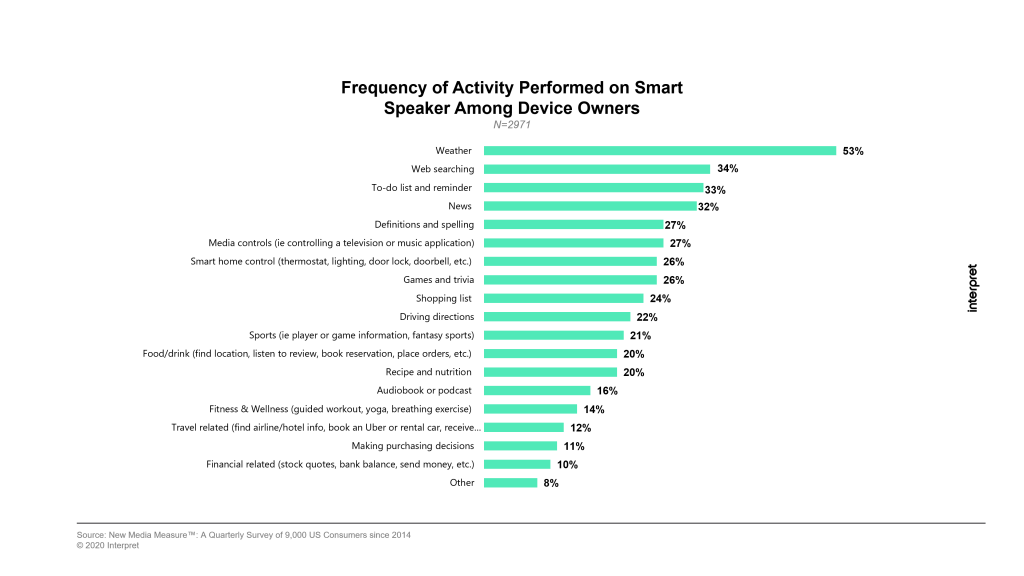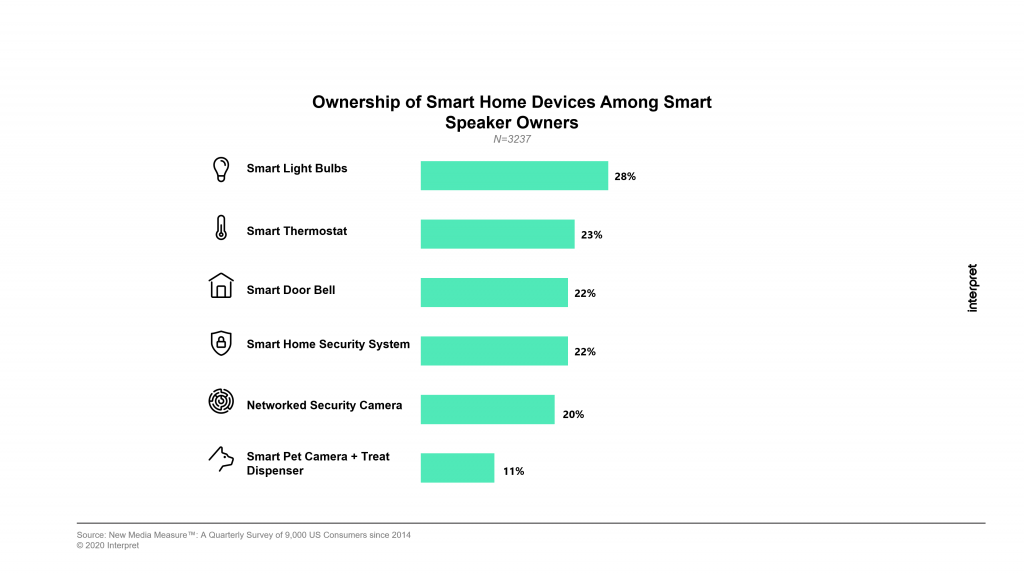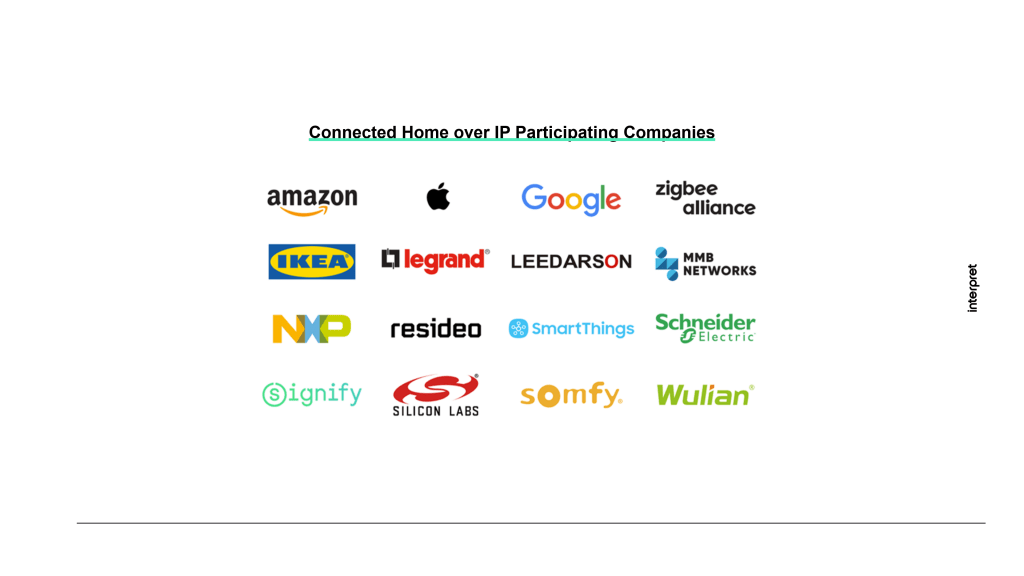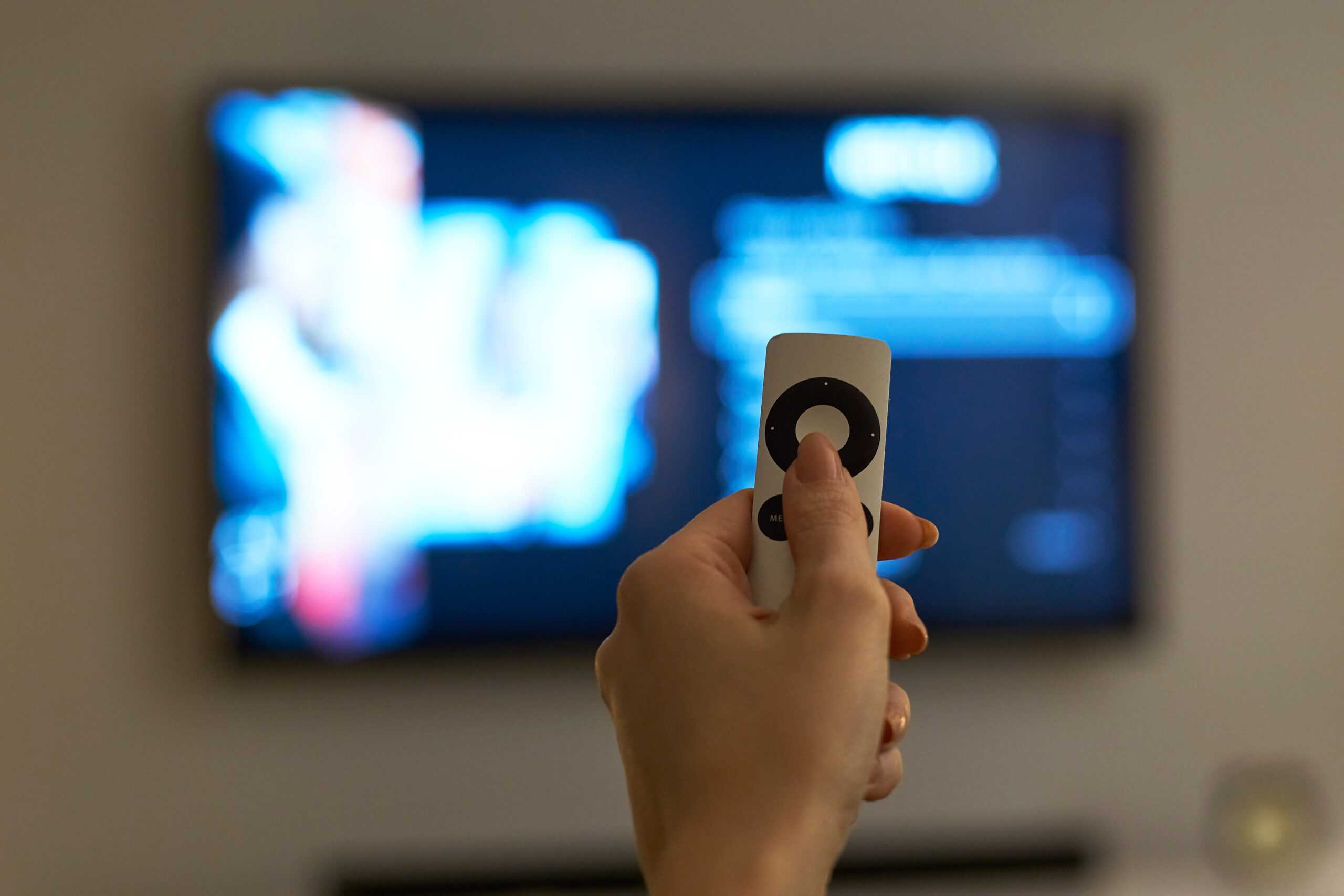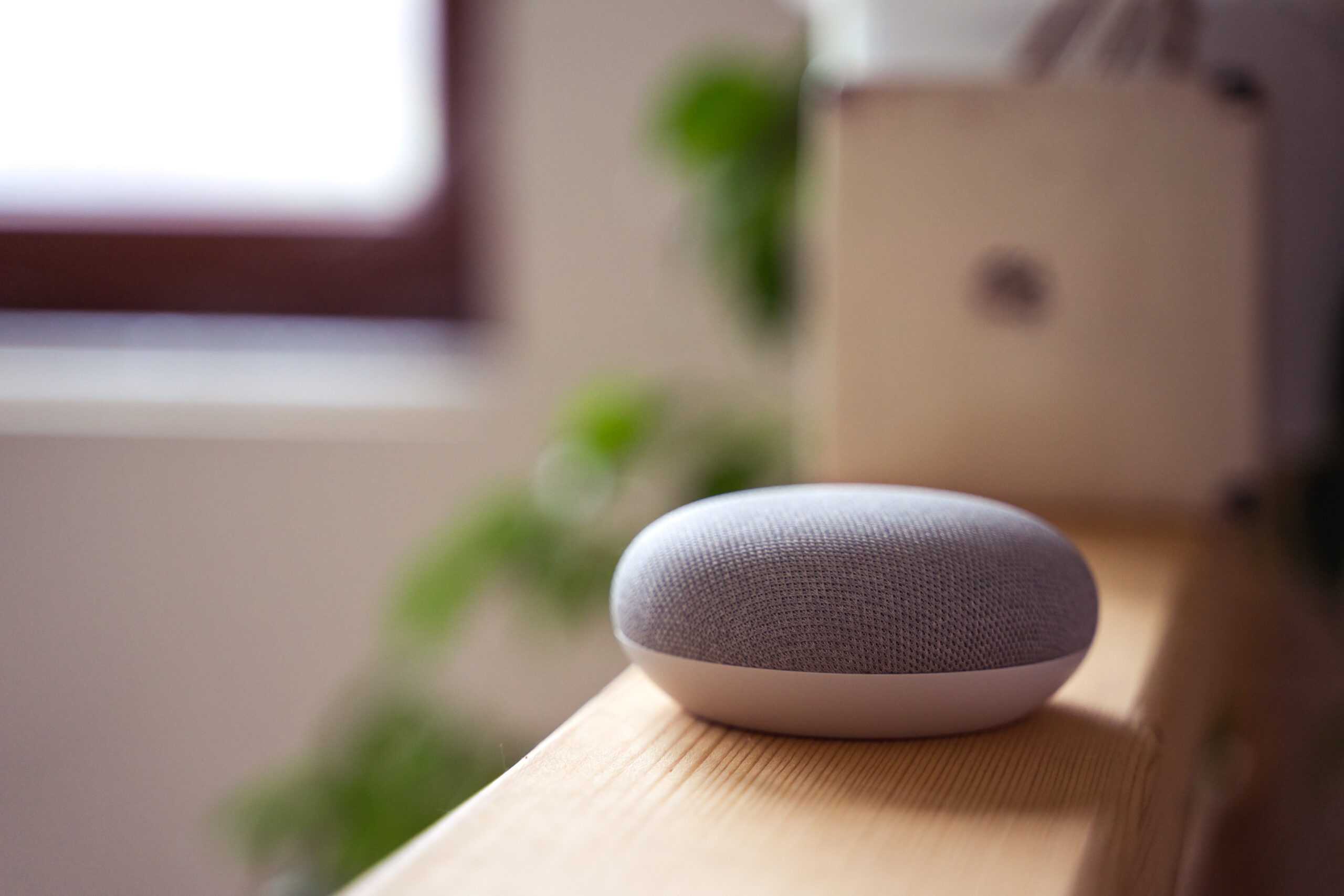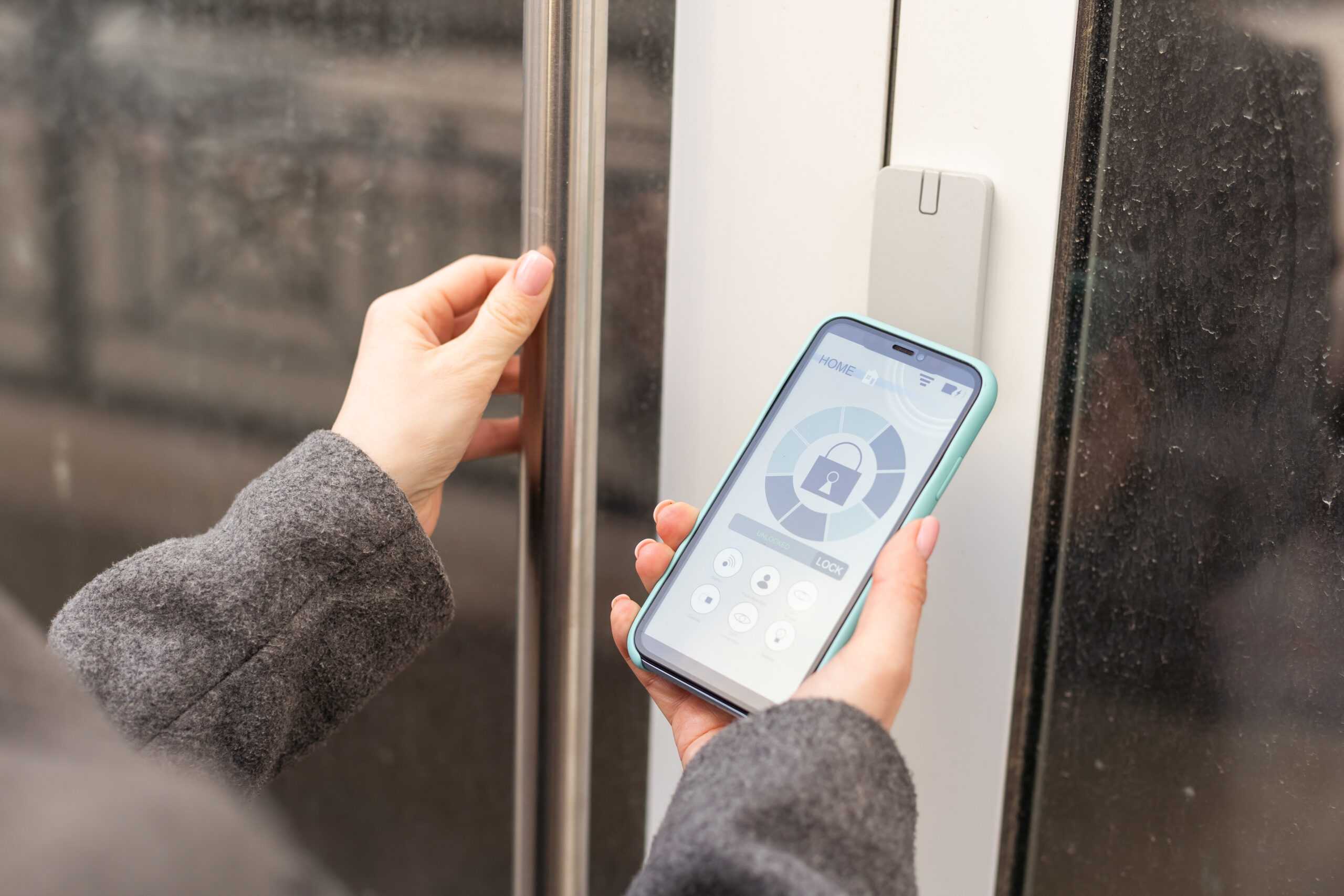Smart speakers are now found in 35% of U.S. households, according to Interpret’s New Media Measure quarterly survey of 9,000 U.S. households. The screen-enabled version of smart speakers, called smart displays, were heavily promoted for the holidays, with commercials for Facebook’s Portal, Amazon’s Echo Show, and Google’s Nest Home Hub. Smart displays will likely be used more frequently than smart speakers for shopping, as only 8% of respondents claim to make purchases through smart speakers. The primary use case for the devices is asking about the weather (53% of respondents), searching the web to answer questions (34% of respondents), followed by keeping a to-do list and task reminders (27%). An impressive 26% of respondents reported that they control smart home devices through their smart speaker.
Smart home devices, which include connected lighting, connected security systems, smart thermostats, connected cameras, doorbell cameras, smart locks and smart pet feeders/cameras, are more often found in households that own a smart speaker. Over half (54%) of smart speaker owners own some other kind of smart home product, compared to non-smart speaker homes, of which only 17% have one or more smart home products. Among all smart speaker owners, the smart home product that is most often owned is a connected light bulb, followed by a smart thermostat.
While Amazon’s market share of all Alexa-powered speakers and displays is 25 percentage points more than that of Google’s (71% versus 44% of all smart speakers/devices owned), both brands have been integrated and promoted for use with most smart home security systems. Owners of smart home security systems are three times more likely than non-security systems owners to have a smart speaker, and nearly five times more likely to have a smart display device. The smart speaker and smart display have become a convenient addition to smart home security systems.
Apple, Amazon, Google and the Zigbee Alliance announced, at the end of 2019, work on a new smart home protocol, based on IP, aptly called Connected Home over IP.
The new standard, if ultimately created and implemented, will help end the confusion and uncertainty of products working together – a significant barrier plaguing the growing number smart home enthusiasts. Until then, smart speakers have the potential to integrate disparate smart home products, from different vendors, using different standards, controlled by separate apps.
Just how important is connecting one smart home device to another among households who have snapped up popular smart home gadgets? Interpret’s New Media Measure survey has quantified the value of interoperability and we are sharing it with our clients. Ask us to learn more.
